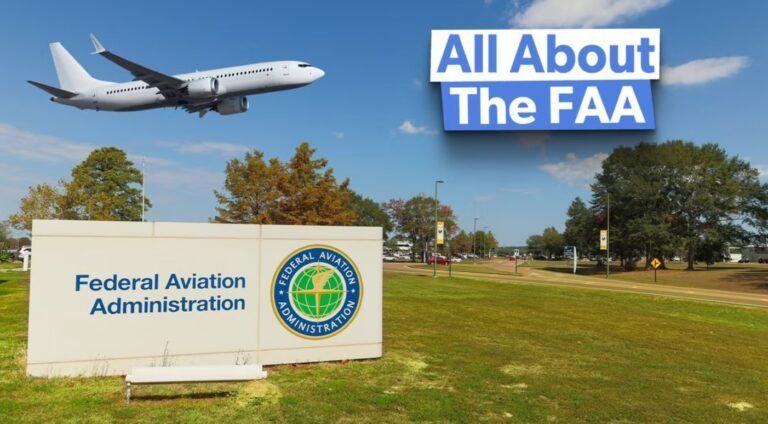Airports are more than terminals and runways — they’re lifelines that connect people, goods, and economies. As aviation continues to expand, funding becomes essential to maintain, upgrade, and secure the infrastructure supporting these critical hubs. Whether you’re managing a regional airport or exploring new aviation projects, understanding how to secure federal aviation grants can be a game-changer.
What Are Federal Aviation Grants?
Federal Aviation Grants are financial awards provided by the U.S. government, specifically through the Federal Aviation Administration (FAA), to improve the safety, capacity, and environmental standards of the country’s aviation infrastructure. These grants help local, regional, and state airports make necessary improvements without burdening taxpayers or increasing costs for travelers.
Why This Guide to Federal Aviation Grants Matters
Securing aviation-related funding isn’t just about filling out a form. It’s a strategic process requiring clear goals, a deep understanding of program requirements, and effective project planning. This Guide to Federal Aviation Grants will walk you through the key types of grants available, eligibility requirements, and best practices for applying and managing funds.
Major Types of Federal Aviation Grants
1. Airport Improvement Program (AIP)
The cornerstone of aviation funding, the AIP provides grants to public-use airports for planning and development projects that enhance safety, capacity, security, and environmental sustainability.
- Runway construction and rehabilitation
- Taxiway expansion
- Noise mitigation
- Airfield lighting improvements
The amount awarded depends on an airport’s size, passenger volume, and classification (commercial service, general aviation, etc.).
2. Airport Terminal Program
This relatively new program under the Bipartisan Infrastructure Law supports terminal development projects. It includes funding for:
- Terminal expansions
- Accessibility upgrades (ADA compliance)
- Passenger screening improvements
These grants are competitive and aimed at increasing passenger experience and efficiency.
3. Airport Infrastructure Grants (AIG)
Also funded through the Infrastructure Investment and Jobs Act (IIJA), AIG provides annual grants focused on modernization efforts, air traffic control towers, and sustainability initiatives.
Who Can Apply for Aviation Grants?
The Guide to Federal Aviation Grants emphasizes that not every organization is eligible. Most funding is reserved for:
- Public agencies and municipalities that own public-use airports
- Private entities operating under a public-use agreement
- Native American tribes
- States and political subdivisions
Additionally, applicants must be part of the National Plan of Integrated Airport Systems (NPIAS) to qualify for AIP funding.
Key Steps in Applying for Federal Aviation Grants
1. Define Project Scope and Justification
The FAA expects applicants to present a well-defined project with a clear public benefit. This includes safety improvements, capacity expansion, or compliance with federal standards.
2. Complete an Airport Capital Improvement Plan (ACIP)
An ACIP outlines an airport’s planned projects over a 3–5 year horizon. It must be submitted annually to your FAA Airport District Office (ADO) for review and prioritization.
3. Environmental Review
Depending on the project’s scope, an Environmental Assessment (EA) or Environmental Impact Statement (EIS) may be required under the National Environmental Policy Act (NEPA).
4. Submit Grant Application
Once approved for funding, you’ll work with the FAA to submit a formal application, which includes:
- Project cost estimates
- Detailed engineering plans
- Compliance documentation
Applications are typically processed through the FAA’s online grant system, the Delphi eInvoicing System.
Understanding Matching Requirements
Most federal grants are not 100% funded. The FAA usually covers 90% of eligible project costs, leaving a 10% local match (5% for certain small airports or disadvantaged communities). Knowing this upfront can help you budget and identify matching sources such as state aviation grants or passenger facility charges (PFCs).
Best Practices for Managing Aviation Grant Funds
1. Stay Compliant with Grant Assurances
When you accept funding, you’re agreeing to follow specific operational and legal requirements known as “grant assurances.” Violating these terms can jeopardize future funding.
2. Maintain Accurate Financial Records
Track expenses, contractor invoices, and disbursements meticulously. The FAA may audit your project, and transparent records will keep your airport in good standing.
3. Report Progress Regularly
Grantees are required to submit periodic updates, especially for multi-year or high-cost projects. These reports ensure accountability and help justify future funding rounds.
Benefits of Securing Federal Aviation Grants
This Guide to Federal Aviation Grants is not complete without highlighting the real-world impact of successful funding:
- Improved passenger experience through upgraded terminals
- Enhanced safety with modernized runway lighting systems
- Increased operational efficiency and capacity
- Reduced environmental impact with green energy initiatives
- Boosted local economies through construction jobs and increased tourism
Common Challenges and How to Overcome Them
1. Complex Compliance Rules
FAA requirements can be overwhelming, especially for smaller airports. Hiring experienced grant consultants or partnering with state aviation agencies can help navigate the process.
2. Competitive Application Environment
Demand often exceeds supply. Make your application stand out by clearly demonstrating how your project aligns with federal priorities, such as safety, equity, or environmental sustainability.
3. Limited Internal Resources
Airport staff may be stretched thin. Consider allocating a dedicated project manager or collaborating with regional planning organizations to help manage the grant lifecycle.
Future Trends in Federal Aviation Funding
The aviation industry is evolving rapidly, and federal funding is expected to reflect these changes. Future grants will likely prioritize:
- Climate resilience and carbon neutrality
- Advanced air mobility (AAM) infrastructure
- Technology upgrades for automation and security
- Equity-focused investments in underserved communities
Final Thoughts
With aviation continuing to play a critical role in economic development, understanding how to secure and manage FAA funding is no longer optional — it’s essential. This Guide to Federal Aviation Grants empowers airports and municipalities with the knowledge needed to access federal funds, improve infrastructure, and elevate passenger safety and experience.
Whether you’re a small municipal airport or a major hub, the opportunity to enhance your operations through federal aviation grants is within reach — but only if you’re prepared. Use this guide as your blueprint to unlock vital funding and elevate your airport’s future.

